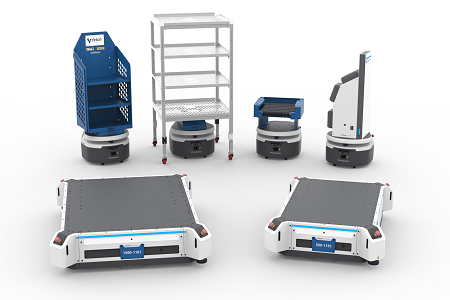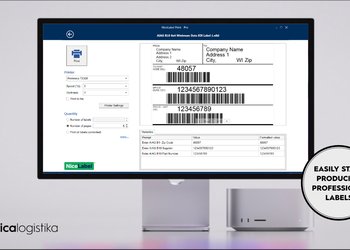Why your warehouse needs an AMR part II: Three Warehouse Strategies That Optimize Efficiency, Productivity, and Profitability within Modern Facilities

We all know warehouse automation is important. We also know logistics almost always fall into two distinct categories. It’s either viewed as a strategic asset or a strategic weakness. This is why having the right warehouse strategies in place is so crucial to success — especially when faced with such modern challenges as increased customer delivery expectations, an unprecedented labor shortage, and the continual need to keep costs low.
79 percent of 3PLs report that they feel unprepared for the impact of these very issues.

So, if you are one of the companies projecting budget for robotics in the coming years, you are already aware of the positive impact automated robotic solutions can have on warehouse efficiency.
If you are not one of these companies, please note there is no reason to panic. When considering an investment in robotic automation, it can be hard to know where to start. This is especially true when you’ve become used to executing the same warehouse strategies year after year — give or take with some tweaks — and have continued to experience success with them.
Right now, adopting new warehouse strategies is crucial for survival and this is true for any profitable business regardless of the industry it operates in. For logistics, it’s even more important given that the success of a business is so clearly and inextricably linked to the performance of its supply chain.
Change is shocking but it can also be good. Change can lead to profitability. But change also requires a review of what’s working, what isn’t working, and looking at old problems with a fresh, strategy-focused mind. To help you get started, let’s review three common warehouse strategies involving AMRs that logistics pros may not have considered.

Warehouse Strategy #1: You’re Not Regularly Tracking Your Material/Product/Inventory Flow Using AMRs
Keeping track of inventory can sometimes be the most difficult task associated with operating a successful warehouse, factory, or distribution center. Automating this process can mitigate this headache.
Adopting an RFID solution coupled with an Autonomous Mobile Robot can automate the cycle-counting process and reduce inventory loss via its ability to collect, locate and track RFID tags on the products and bins within your facility.
Warehouse Strategy #2: You’re Not Considering AMRs When Future-Proofing Your Business for Forthcoming Demand
In many cases, expanding your facility is one of the many warehouse strategies necessary to long-term survival. That said, it can be a complex process to make dynamic use of your space — especially during peak seasons and shifts.
When it comes time to plan for future growth, organizations sometimes become focused on a forecast number and/or plan that becomes fixed and allows little room for flexibility when things inevitably change.
Autonomous Mobile Robots are the definition of flexible. They have minimal impact on existing warehouse operations and infrastructure and are easy and amenable to scale. In fact, the larger your facility, the more benefits you’ll see as a result of their efficient material handling capabilities.
Because Autonomous Mobile Robots are not fixed assets, changing workflows or re-deploying them to other locations can be done with ease. Their ability to adapt to change instantly and effortlessly integrate into and out of varying workflows make them a perfect complementary solution to your existing warehouse operations strategies and automation investments.
Warehouse Strategy #3: You’re Not Considering the “Short-Term” Benefits of AMRs When it Comes to Strategizing
We’ve already established the consequences of failing to plan for your business in the long-term. That said, neglecting to strategize for the short-term can be equally harmful — especially for Third-Party Logistics (3PL) providers.
Another major sea change in the logistics industry in recent years is customer demand for shorter contracts with 3PLs. Seeking flexibility, when a customer signs on with a 3PL for a 2-3-year contract, the ROI from a $1M-plus automation solution for a 3PL can be extremely low. Further, the next contract to come in — even if the new contract is with the same customer — rarely has the same requirements as the first one.
Just as the modern customer requires flexibility, so does the modern 3PL.
Investment in Autonomous Mobile Robots by 3PL organizations require no changes to infrastructure and can start delivering ROI in just a matter of weeks. Further, the variety of warehouse robots available today is quite vast. From cart and conveyor-based interactions to pick-and-pack and RFID-based cycle-counting — virtually any major workflow a facility requires can be matched with a robotic solution that can get the job done.
Good luck getting started! If you would like to learn more contact us!
Read more about AMR here!
Source: Fetch Robotics



